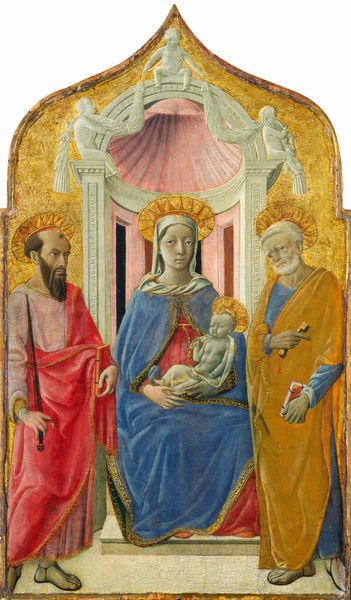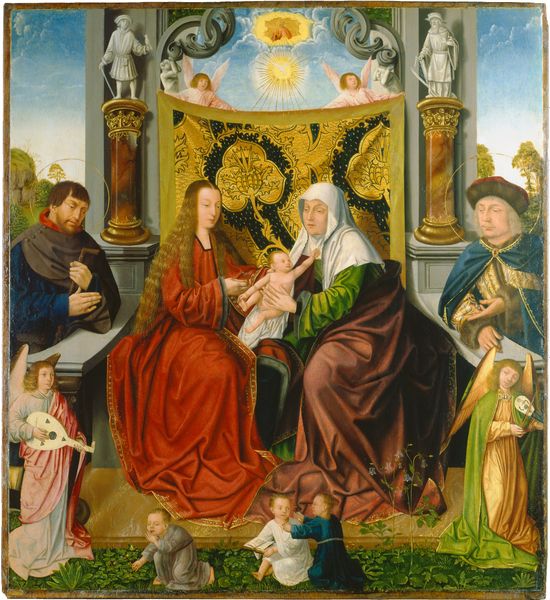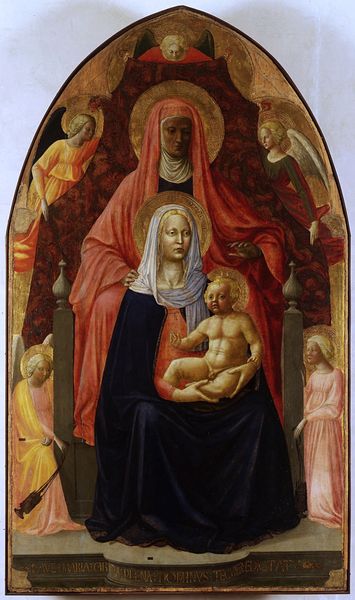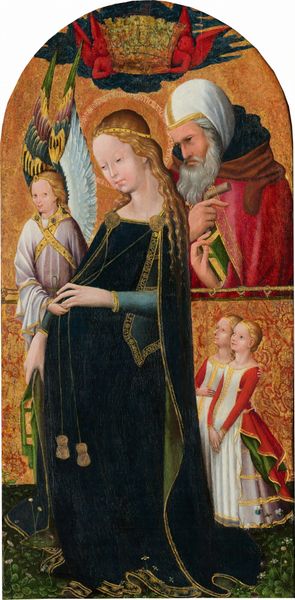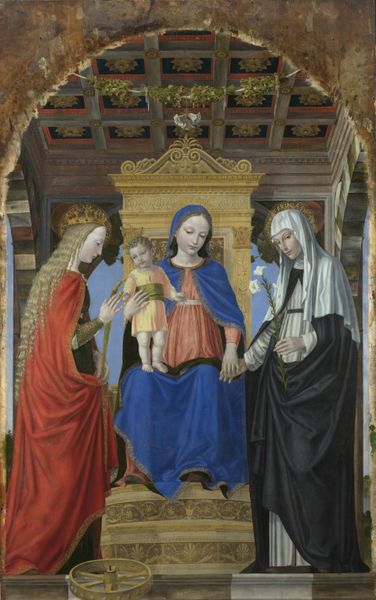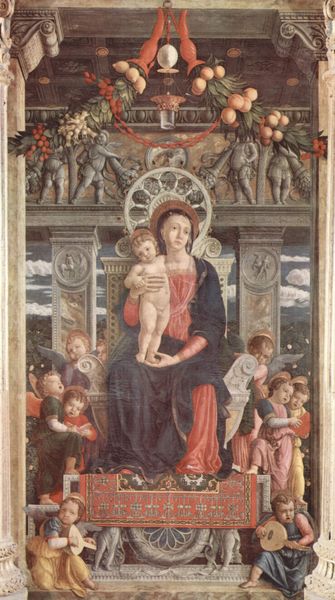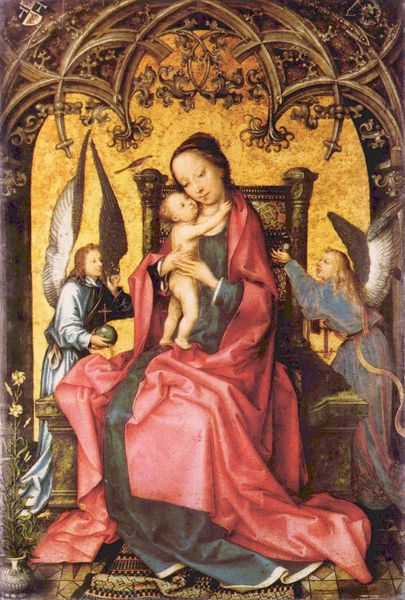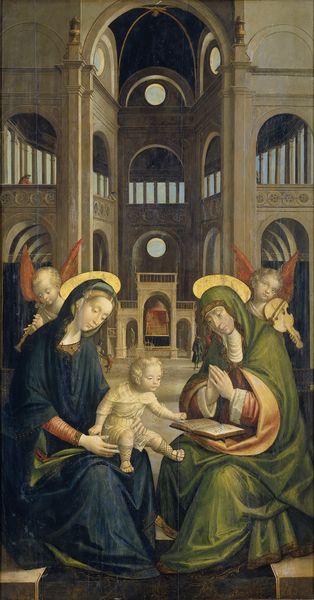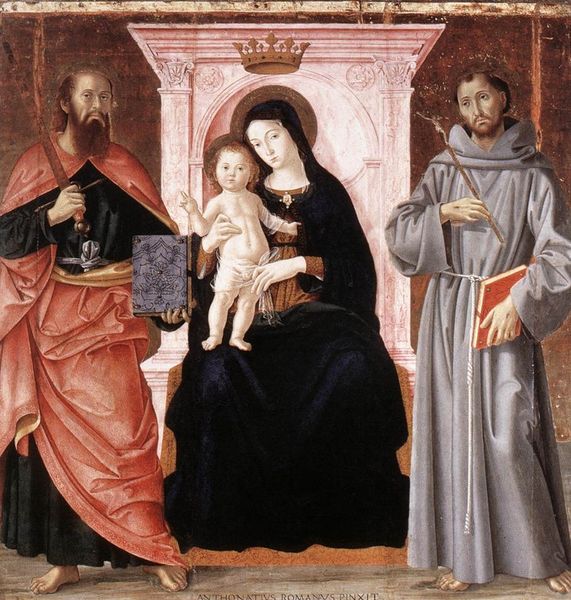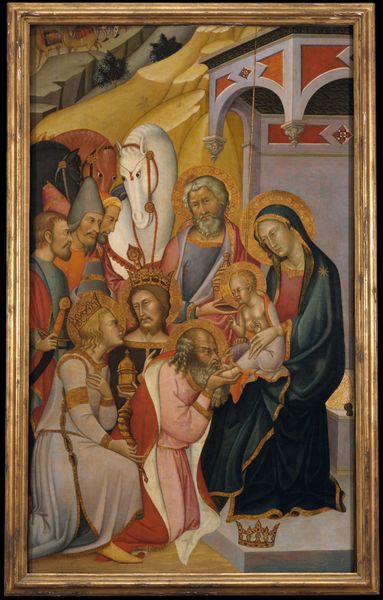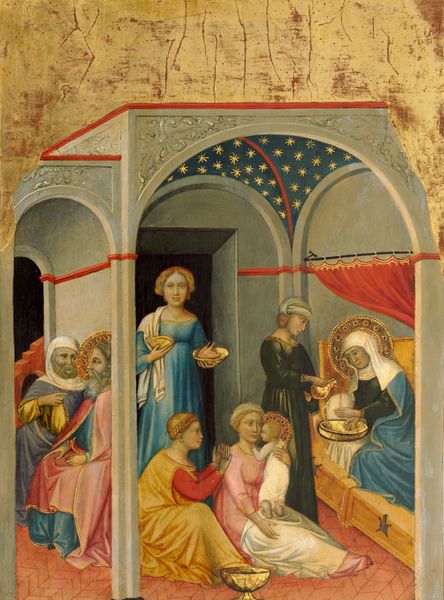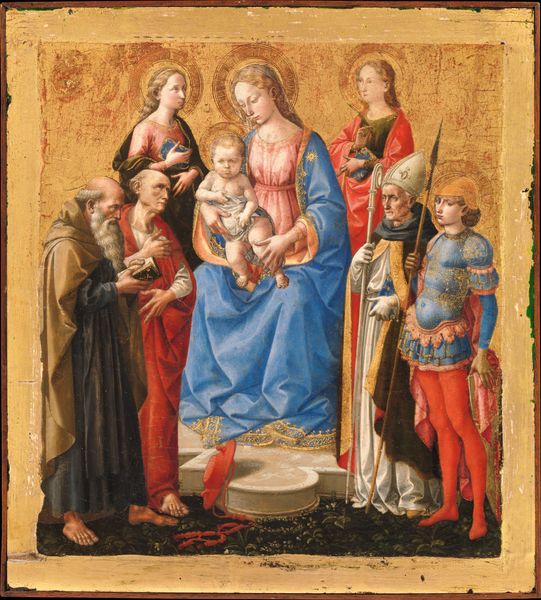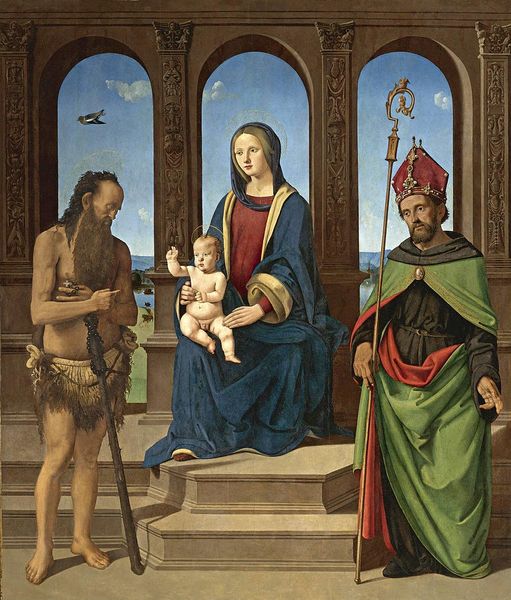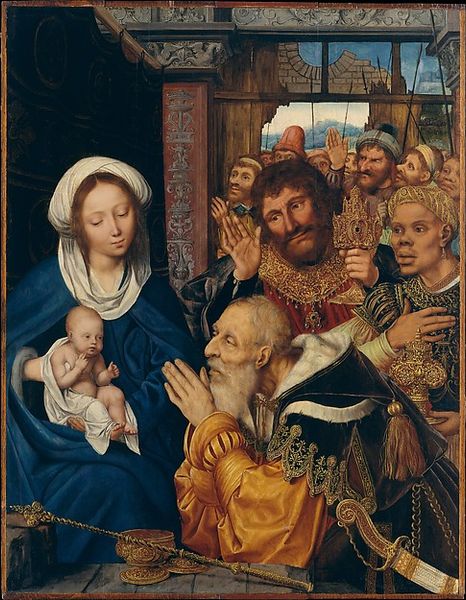
painting, oil-paint
#
portrait
#
painting
#
oil-paint
#
figuration
#
oil painting
#
child
#
13_16th-century
#
history-painting
#
italian-renaissance
Dimensions: 158.1 x 67.5 x min. 0.7 cm
Copyright: Public Domain
Editor: This is "Saint Anne with the Virgin and Child, and Joachim," an oil painting from around 1505. It’s currently at the Städel Museum. What strikes me most is the quiet solemnity; even with the children present, there's a formal quality to it all. What stands out to you? Curator: It breathes with the quietude of a late autumn afternoon, doesn’t it? Notice the symbolic weight layered within its intimate space: Anne represents the unbroken chain of faith. Then you see Joachim. He points towards his daughter. Isn’t it like witnessing a silent instruction being handed down through generations? Look closely. Does the rendering of space, of light and form remind you of the soft focus championed by Leonardo at the time? What sort of stories does this generate? Editor: Absolutely! I see how the sfumato softens the figures, connecting them. It’s almost as if the artist wanted us to think about the emotional connections between them, as much as, if not more than, the religious ones. Does it remind you of other paintings of this era? Curator: Precisely. This softness pulls us into a meditative space, unlike the stark narratives we often see from the North. This particular staging, the holy kinship or “sacra conversazione,” makes us—viewers—the implied onlookers. And for that instant, we step into the painting! But it's really not just visual. Can’t you smell the linen drying out on the lines, or perhaps just the soft glow of a single lit candle on a clear and cold winters evening. Editor: It’s fascinating how context and visual technique converge to deepen the feeling. Curator: And suddenly, the work has become a personal memoir! A private story of love and faith in that Frankfurt room, all that time ago. Don't you agree? What I find incredible, it this interplay that this painting provides. It is not just one thing; but many. Editor: Yes. That's the exciting part, isn’t it? I’ll definitely be looking at Renaissance painting in a new light after this.
Comments
No comments
Be the first to comment and join the conversation on the ultimate creative platform.
